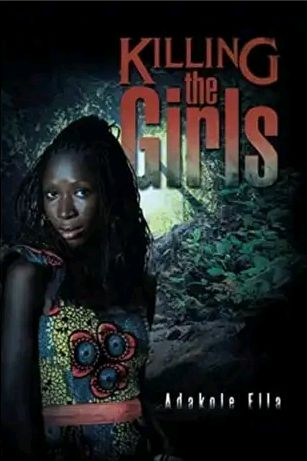By steve anyebe.
With a mixed traditional cum modern setting, Adakole Ella’s novel, “KILLING THE GIRLS”, comes off finely as a successful crusade against age long gender discrimination in a typical African society where male chauvinism has always dictated the essence, engagement, and direction of life. It is the story of a female revolt, hatched and successfully executed by an all-female gang based in rural Amla village.

In the novel, the village of Amla shows off a well established and well organised traditional and social arrangement, but whose internal contradictions produced the revolutionary Echeune, the girl-child renegade who was able to eventually topple the regime of King Aduba and phase out all anti female cultural practices, but not before losing almost all the members of the revolutionary Ejenmodo Gang in the evil forest, their operational base.
Amla had a very repressive traditional regime whose main manifestation was the segregation of female children who were born three in a roll. Such children and their mothers would thus be removed from mainstream society and restricted to the Mudfish Community, until certain rites were performed, before they would be allowed back into the mainstream. Even at that they had to live for life as taboo objects, with all the discriminatory attitudes against them. This cultural setting was sequel to the appearance of a mythical mysterious creature in Amla about four hundred years back, who was said to have initiated the cultural law of the superiority of the male gender over the female. However, there had been stories of some women(even backed by men) who had dared to challenge the law, but they all failed to cause any positive change, while most of them died mysteriously.
Enter Echeune, the only surviving one of her mother’s three girls, with a determination never known before in Amla. The death of her mother and her two sisters, in particularly painful circumstances, which she attributed to the culture of segregation, gingered her the more. She mustered everything at her disposal to wage the seemingly impossible war. She formed and armed an all female revolutionary army, damning all opposition, and engaged the State in a guerilla-style agitation. Even when all hopes seemed lost with the death of nearly all her fighters, Echeune forged on, deploying some mysterious powers she had acquired through which males could be transformed into females. With this, total confusion ensued as many highly placed male State officials, as well as elderly male custodians of the discriminatory culture, metamorphosed into females within a few days of some mysterious bites from equally mysterious insects.
Eventually, the strong resistance from the King and custodians of the culture dwindled while the repressive measures against the pro-feminine agitators consequently gave way and a new cultural dispensation was agreed upon in which all the old discriminatory measures were completely abolished.
The triumph of the female folk in “KILLING THE GIRLS”, as demonstrated by the revolutionary Echeune, could be a clarion call on downtrodden women in macho societies all over the world that victorious change is very possible despite the drags of malignant male chauvinism. The novel should, no doubt, hold special appeal for gender agitators, human rights promoters and activists, as well as pro-women Organisations globally.
In “KILLING THE GIRLS”, Adakole Ella successfully portrayed aspects of the very dynamic culture and traditions of his Otukpo people of Central Nigeria, bringing into play the elements of love, hatred, suspense, discrimination, agitation, birth, death, marriage, betrayal, dedication, perseverance, focus, suffering, merriment, history, mysticism, modernity, and hope, to make his reader attain different moods as the pages are turned.
A big screen adaptation of “KILLING THE GIRLS” has great potentials to be an instant chartbuster and remain on top for a long time. That is if it is not banned from circulation, being termed as inciting.
